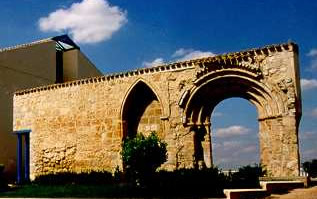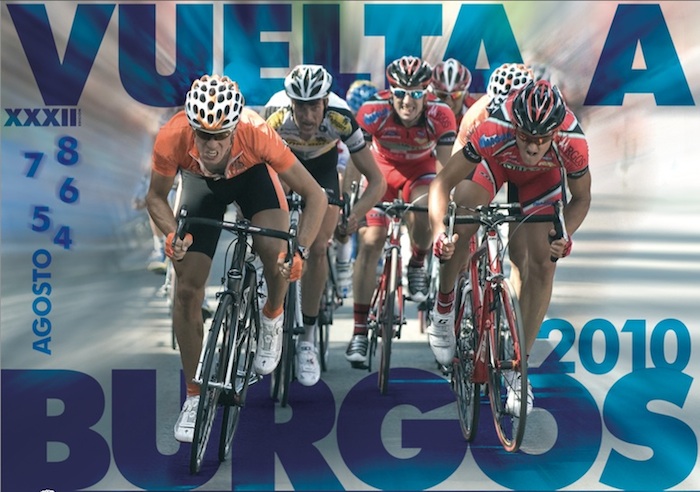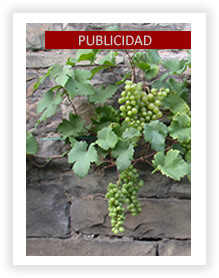About Roa
The Spanish village of Roa is located in the Castilian province of Burgos, within the autonomous Region of Castile and Leon. It forms part of the Ribera del Duero, in fact, the headquarters of the Wine-Regulating Consortium of the Ribera del Duero is in Roa.
Roa is also widely known under the name of Roa de Duero, a name that has officially been ceased around 1988.
- Juan Martin Diez “El Empecinado” (the Stubborn Warrior), originally born in Castrillo de Duero. He fought valiantly during the Independence War. He arrived in 1813 in Roa to assist the Clergy Merino in the liberation of the village of Roa, at that time occupied by a French army. After the loss at Trienio Liberal, he was sent to be sentenced by order of King Ferdinand VII, and held imprisoned for two years until his hanging in the Town Square of Roa on August 19, 1825.
- Prince Henry of Castile, “El Senador”, son of Ferdinand III, the Saint, King of Castille and Leon, and Queen Beatrice of Swabia. He was Lord of Roa and, along with Queen Maria de Molina, tutor to the minor King Ferdinand IV. He died in Roa on August 8, 1303
- Cardinal Cisneros: Regent of Spain – travelled to meet the future Charles I, but took ill during the travel and seeked accommodation at the palace the Count of Siruela has in Roa. That same night, November 8, 1517, he dies in the village of Roa.
- Doña Violante, daughter of Queen Violante of Hungary and James I of Aragon, “The Conquistador”, was betrothed to Alphonse X, The Wise. After her spouse’s death, the widowed queen retires to the Monastery of Valbuena and, from there, sets a number of reforms and Laws over the villages and townships belonging to her defunct husband, one of the most important being Roa’s Vintage Ordinance of March 19, 1295 for the construction of the village walls and the castle of Roa, as well as the norms and regulations regarding the procedures of vintage.



Economy
- Agriculture: This area cultivates excellent potatoes, green beans, vegetables, cheeses, processed meats and the world renowned wines.
- It is part of the Community of Rural Wine Routes.
- The nearest airports are in Burgos and Valladolid, but Roa is a mere 1.5 hrs from Madrid.
- The Regulating Consortium of the Ribera del Duero Wines are in Roa, housed in the former St. John the Baptist Hospital, built in the Sixteenth Century
Historic buildings and statues
- Church of Our Lady of the Assumption..
- The Statue dedicated to the female vintner, and showing a young woman carrying the typical basket of grapes, was previously located in the center of Town, across the church, and can now be seen in the Plaza de España.
- Statue of the Empecinado (“The Stubborn One”).
- Statue of Cardinal Cisneros.
- Promenade of El Espolón, with canon of the Fourteenth Century and breathtaking views of the valley and the Duero river.
- La Alhóndiga (Village Granary), of the seventeenth Century, dedicated to the storage and trade of cereal. It used to have a section where the vintners would make the wines.
- Archaeological excavation site of prehistoric origins – showing proof of ancient Vaccaei settlements in the central meseta of Northern Spain. Since 1993, Roa is considered a historically protected archaeological location.
- Church of Our Lady of the Valley (Virgen de la Vega), the patron saint of Roa. Annual pilgrimages are recebrated on the second Sunday in May and as main festivity, September 8th.
- Church of San Esteban, located next to the remains of the Southern City Walls, containing important gothic statues. This church initiate the annual Good Friday procession during Holy Week.
- Cross of Saint Pelayo, of the Sixthteenth Century located on a hill on the outskirts of the village.
- Roa still retains some of the remains of the city wall Doña Violante had erect to protect the village against continuous attacks. The most important locations of the wall are the Gate of San Juan and a large stretch of medieval wall, still in perfect condition, near the Plaza Mayor. The wall could not be preserved during the French invasions, and during the Carlista wars, the village was completely burned down, along with the castle and a large portion of the city wall.
Sporting events
- Vuelta a Burgos (Burgos Circuit) – this cycling competition takes place mid August and has Roa as either the starting or final leg of the race.
Gastronomy
- Ribera del Duero is very famous, besides the wines, for its roasted baby. From this main dish derive others such as cutlets roasted over vine branches, which can very well be accompanied by other famous products of our area, such as the morcilla (blood sausage), the chorizo or the panceta. The semi-cured sheep- and goat cheeses are also very well-known for their outstanding quality.
- Burgos’ waterways are a natural habitat for crayfish, for whose succulent preparation Roa is also known. Another genuine local dish is the famous tavern-style Cod, which is slowly simmered in a clay pot. This recipe is usually eaten during cold months, but especially during Holy Week.
- Typical desserts are empiñonados (almond and pinenut pastry) or bolillas (an anise pastry). The oil cake (torta de aceite) is very typical bread elaborated in the Ribera del Duero and usually accompanies the roasted baby lamb dishes. The Ribera del Duero wine is a perfect dinner companion to the varied Ribereña gastronomy.
Famous personalities related to Roa
Copyright 2011 © www.roadeduero.com | Privacidad | Nota legal | Publicidad



